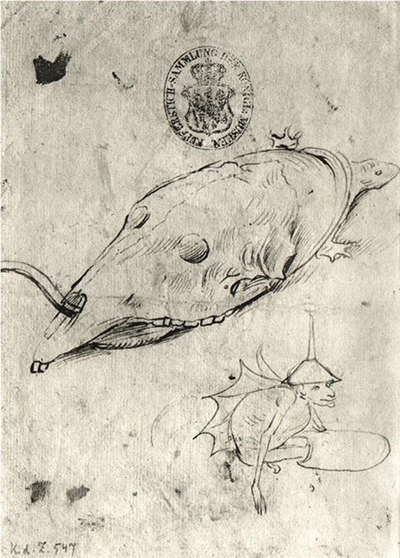Bosch's nightmarish characters come to life in this pen and ink drawing from the early 16th century
The winged knome found at the bottom of the drawing is clearly only a quick sketch, with little or not detail or shading added. It is not clear what it is placing its legs into, perhaps a bag or a pipe. With Bosch's imagination being so wild it is hard to be sure of what exactly he had in mind.
On the other side of this drawing you will find a bird monster and snarling dragon. This double sided artwork can be found alongside several other drawings by Hieronymus Bosch in Berlin's Staatliche Museen.
The artist decided to put two scary characters on each side of the paper and research performed recently has proven that all that is featured here came from his own hand, and not that of anyone in his studio. Research discoveries continue to be made around Bosch's career, all these centuries later. One such drawing recently was attributed to the master having previously been linked to those of his studio.
It can be hard to distinguish between works from an artist and his studio as typically the studios will have talented young artists who inevitably draw in huge elements of influence from their master. In the Renaissance and Baroque periods it would not have been as easy for them to experience other artists and so much of their knowledge would come from the leading artists of their studio.
Much work has been put into connecting study drawings with frescos and oil paintings from the Renaissance in order to understand more about the processes that were used at that time. The raw simplicity of pencil, ink and chalk drawings are very helpful for understanding an individual's initial thought process about a larger artwork. It could then e compared with the completed final piece, often commissioned, to see how changes were made during the process.
Bosch tended to take on fairly manageable projects and did not have the need for assistants in quite the same that Michelangelo would with his work in the Sistine Chapel, for instance.




